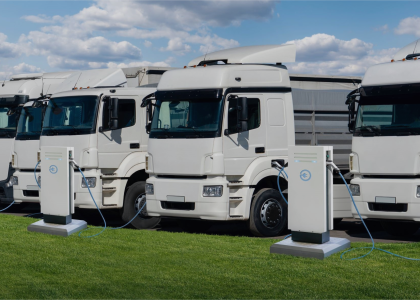Congress should:
- Establish a federal energy efficiency resource standard (EERS) with savings targets for electric and natural gas utility energy efficiency programs. The federal EERS could also include savings from improved building codes and equipment efficiency standards, combined heat and power, and distribution efficiency.
- Allow for flexibility mechanisms so utilities may purchase or transfer electricity savings and natural gas savings from other entities, including other utilities, states, and third parties (e.g., energy service companies) within the same state or power pool
- Encourage states to implement a state EERS that meets federal guidelines or to administer a federal EERS
The Issue
Energy efficiency saves energy and money and helps reduce greenhouse gas emissions. Studies show that significant energy efficiency opportunities are available in all states, with estimates of 20–30% savings or more from cost-effective efficiency measures. At an average cost to ratepayers of 3 cents per kilowatt-hour saved, efficiency improvements are less expensive than building new plants and power lines, and burning more greenhouse gas-emitting fossil fuel. Electricity generated by new conventional fossil fuel power plants costs 7−13 cents per kilowatt-hour.[i]
Summary
An EERS is a mechanism that encourages more efficient use of electricity and natural gas. A federal EERS would set a national goal for energy savings, requiring retail electricity and natural gas distributors to run programs that achieve specific reductions in energy consumption. Energy saving measures range from end-use applications (e.g., high efficiency lighting and appliances) to combined heat and power (CHP) systems and distribution system improvements.
Implementing a national EERS would save energy in every state and establish a baseline level of cost-effective and achievable energy savings. A number of states have already achieved solid savings under an EERS. Some, such as Massachusetts and Rhode Island, are seeing more than 2% new savings each year.
ACEEE recommends a national EERS of 20% electricity and 12% natural gas savings by 2030, including savings from efficiency programs, improved building codes and equipment efficiency standards, combined heat and power, and distribution efficiency. If savings from codes and standards are excluded, targets should be 15% electricity and 10% natural gas savings.
With sufficient investments, the savings would be remarkable. ACEEE estimates that by 2030, a federal EERS with 20% electricity and 12% natural gas savings would save the country over 5 quads of energy annually, or about 5.5% of the total energy consumed in 2015. CO2 emissions reductions would total almost 300 million metric tons in 2030—equivalent to taking 47 million automobiles off the road. Furthermore, utility customers would cumulatively save a net $145 billion by 2040 (net present value after investments). The bill would also create 400,000 net jobs in 2030 (see our 2015 report on energy efficiency legislation). All these savings are in addition to what we expect existing state-level EERS policies to achieve.
For more information
- ACEEE topic page on EERS
- Federal legislation: American Energy Efficiency Act, ACEEE analysis of federal EERS legislation,
- State EERS: ACEEE policy brief on state EERS

